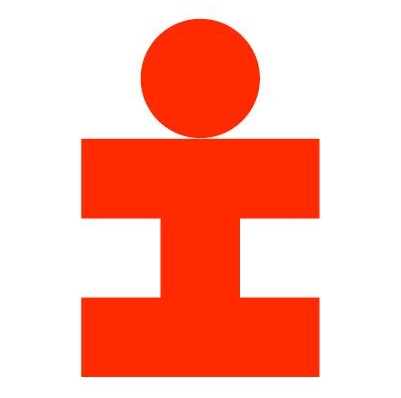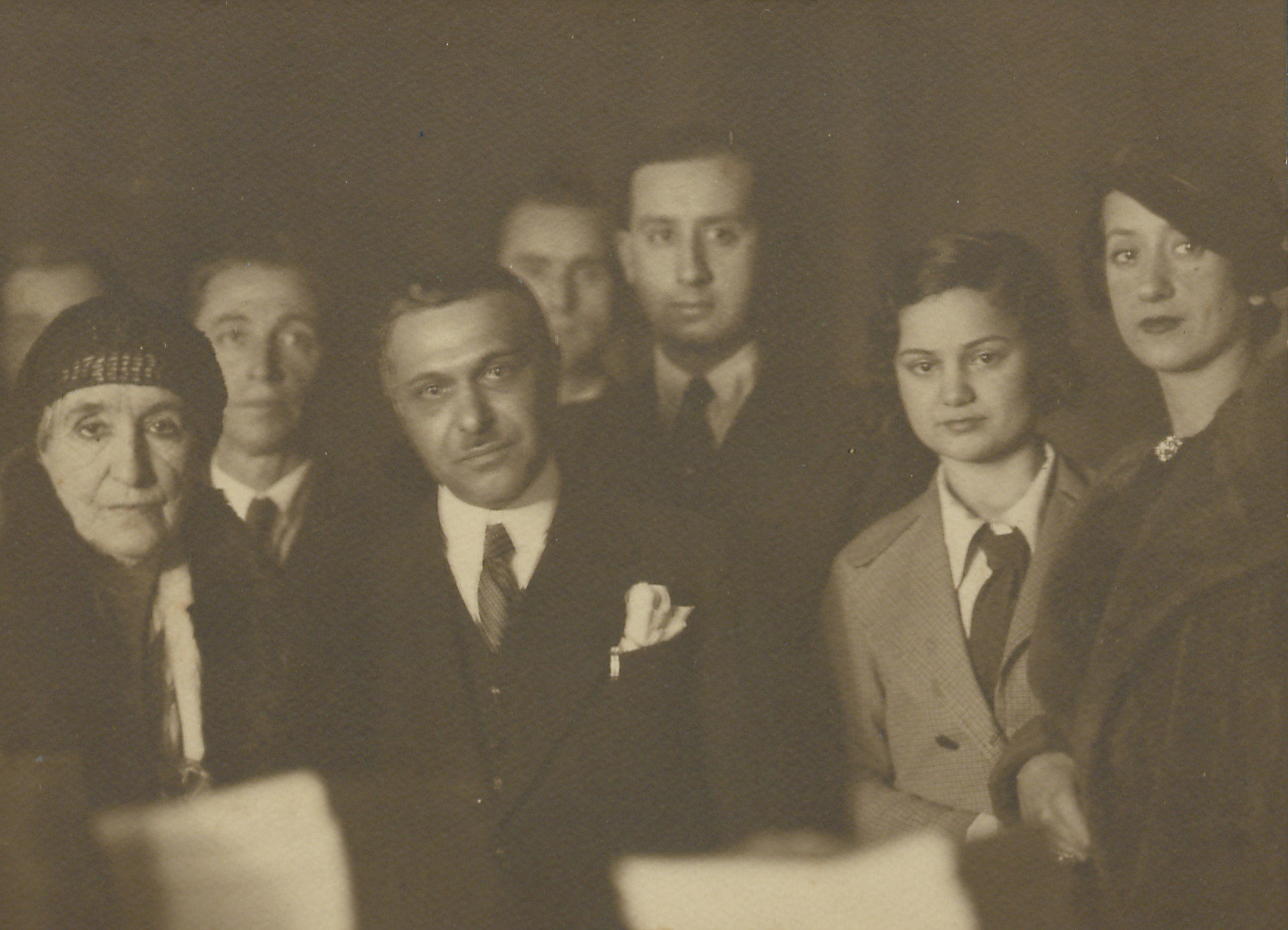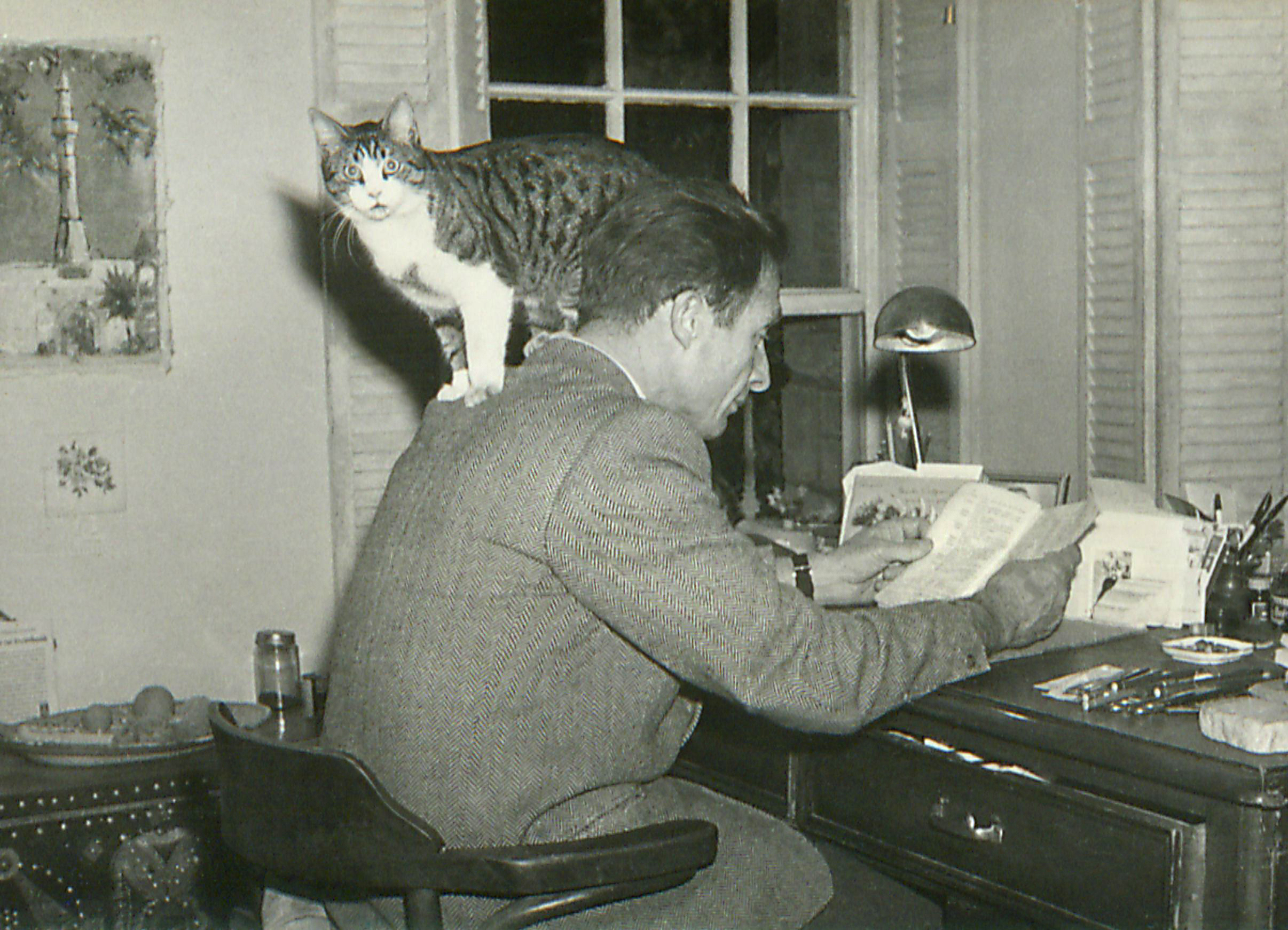The Boğaziçi Archives: Histories of Science, Culture and Education in Istanbul through personal archives.
Over the past year, an assortment of diligent archivists and scholars at Boğaziçi University have been working on a project titled "Histories of Science, Culture and Education in İstanbul Through Personal Archives" supported by İstanbul Development Agency's (İSTKA) "Innovative and Creative İstanbul Financial Support Program". The project is not only fascinating from an archival perspective, but for anyone who is intrigued by personal ephemera of past time periods such as diaries, letters, photographs, and drawings. The archives bring together the materials of noteworthy individuals whose lives have both shaped and represented the significant historical themes of the times they lived.
Imagine sorting through the boxes of notes and unfinished manuscripts of scholars and thinkers whose work spanned more than half a decade in some cases. The collections in this archive include the personal materials of architects, historians, scholars and expatriates who were affiliated with Boğaziçi University, Robert College, and the American College for Girls. Thanks to this project, the material is not only catalogued and classified, but also available online in a digital archival collection. In this interview, I inquire about the project with Nurçin İleri, the Project Assistant Coordinator.
In addition to finishing this stage of archival work, the Boğaziçi Archives currently seeks additional financial support to assist with its future developments. For further information, please visit the official website of the Boğaziçi Archives.
Robert College teachers and their families, early 1920s, Columbia University Archives, RC Documents
Erica: Boğaziçi University is the recipient of a wealth of rich personal archival material. Much of this material was donated by the families of individuals who have contributed to the unique history of the beloved University and whose lives reflect the some of the broader themes influencing Turkish society as well as that of the region over the past 150 years. What prompted the University to undertake the work of classifying, cataloguing, and digitizing this diverse assortment of materials donated to the University?
Students of different nationalities at Robert College, CU-RBML, RC Documents
Nurçin: With the 150th anniversary of our university, we aimed to bring together archives which are crucial and valuable for the construction of the institutional memory and history of Robert College, American College for Girls and Boğaziçi University, under the roof of the institution where they were first produced. While doing this, we noticed that there were some private collections in different departments and administrative units of the university. These documents and objects have been kept safe for many years as a result of individual dedication and diligent efforts. We started to seek ways to unearth these materials. For us, making these institutional and personal archives available to the public is of utmost significance. These materials should be, in turn, classified, catalogued and digitized. We surveyed the criteria of the most significant libraries and archives in these archive-making steps and tried to set our own standards.
Erica: Can you tell us about some of the highlights of the collections in terms of content?
Nurçin: We now have three institutional archives and 12 private collection housed at our Center. The institutional archives and private collections are comprised of valuable written and visual documents in the fields of history, architecture, archaeology, art history, literature, politics, foreign policy and hard sciences that will shed light on the historical periods of late Ottoman and Modern Turkey. With the support of the Istanbul Development Agency, we focused on seven collections that will shed light on Istanbul's history of education, culture and education starting with early 1900s till 1980s.
Turkish Students, American College for Girls, CU-RBML, ACG Documents
Erica: One of the collections directly corresponds to the history of Boğaziçi University, Robert College, and the American College for Girls. Now, through a protocol with Columbia University, New York, signed in 2013, documents held by Columbia University’s Rare Books and Manuscripts Library, covering the history of these institutions from their inceptions until 1971, will be accessible through Boğaziçi University’s digital collections. As one of the largest collections made available by this project, can you describe the significance of this particular collection?
Nurçin: Robert College and American College for Girls were the most significant American education institutions in the second half of the 19th century. Both schools included many international faculty members and students from all over the world. The goals and the content of education in these schools were in harmony with the other American Schools in Anatolian, Middle East and Balkan cities. In that sense, this collection is quite significant for examining the history of education and interaction between various American schools from 1850s to 1971.
Armenian Students, Robert College, 1920s, CU-RBML, RC Documents
The graduates of these schools became quite important historical figures. For instance, the famous politicians who graduated from Robert College include the Bulgarian prime ministers Konstantin Stoiloff and Todor Ivantchoff, and also include important names of Turkish politics such as Mihri Belli, Behice Boran, Ismail Cem, Tansu Çiller and Bülent Ecevit. Vahram Papazyan and Mıgırdiç Mıgıryan, who attended the 1912 Stockholm Olympics and Apostolos Nikolaidis, are well-known athletes who were alumni of the school. In addition, the first female medical doctor of Turkey, Safiye Ali, mathematician Tosun Terzioğlu, archaeologist Halet Çambel, linguist Agop Dilacar, historians Hagop Kevorkyan, Spiro Kostof and Cemal Kafadar and architect Aptullah Kuran are all among the graduates of the school. Among the writers and artists who studied at Robert College and American Girls' College, Halide Edip Adıvar, Abidin Dino, Haldun Dormen, Genco Erkal, Moris Farhi, Talat Sait Halman, Cem Karaca, Ayşe Kulin, Mangasar Mıgırdiç Mangasaryan, Orhan Pamuk, Halit Refiğ and Çiğdem Talu are among the first that come to mind.
Students of different nationalities, American College for Girls. Student nationalities, top row, left to right: English, Albanian, Circassian, Armenian, Turkish, Russian, Georgian, Iranian, American. Student nationalities, bottom row: Arabian, Austrian, Jewish, Bulgarian, Greek
Erica: Do you feel you have you achieved your archival goals, or is there more work to be done?
Robert College students together with street vendors at the land of sweets, 1929-1930, CU-RBML, RC Documents
Nurçin: As a starting point, especially in the previous years, thanks to the financial support of İstanbul Development Agency, we've achieved a lot. Our Center has the basic technical equipment and infrastructural system for an archive. We have the standards of cataloguing and digitization and we opened and continue to open many sources to the researchers. But this was just a beginning, there is a lot more to do. The cataloguing and digitization of the Aptullah Kuran Archives, Traugott Fuchs Collection, and Feza Gürsey Collection is still ongoing. These archives and collection include thousands of materials that were impossible to complete in one year. Furthermore, we have many other collections that we have not even started to work on. For instance, the Adalet Ağaoğlu, Moris Farhi, Leyla Erbil, Yakup Kadri Karaosmanoğlu Collections are among those.
Eveline Thomson Scott’s notes from her visits to various countries in Europe in 1949
Erica: What were the principal archival challenges within the project?
Excavation Workers, Aziz Ogan Collection
Nurçin: The most difficult part of continuing this archive project is establishing financial support. Unfortunately, the budgets of state universities for such projects are quite limited. We made some applications for sponsorship and some of our applications were successful, but the support was still not enough. The archival work is labor-intensive work: you need a group of archivists who specialise in different areas such as history, architecture, literature and politics. The team members should also know many languages, such as German, French, Greek, Bulgarian and Armenian, along with Ottoman Turkish and English. Briefly, you need to have technically and academically qualified team members. In the previous year, we managed to have many archivists who met these criteria. If we are able to find new financial support, we aim to keep the team together. Hopefully we'll be able to do so.
Erica: One of the broader aims of the project is to attract researchers. What kinds of scholars or researchers might be interested in accessing these archives?
Aziz Ogan with his daughter Jale İnan, Aziz Ogan Collection
Nurçin: The scholars and researchers who conduct research on history of education in Middle East in the 19th and 20th centuries (Robert College, American College for Girls and Boğaziçi University Archives, Scott Family Collection), archeology and museum studies in the early 20th century (Aziz Ogan Collection), history of architecture (Aptullah Kuran Archive), physics studies and history of science (Feza Gürsey Archive) and philology studies, art history, and haymatlos intellectuals (Traugott Fuchs Collection). Moreover, those who conduct research on Turkish literature from the early 20th century until today can find valuable materials in Yakup Kadri Karaosmanoğlu, Adalet Ağaoğlu, and Leyla Erbil’s Collections.
Erica: How might people with just a casual interest rather than a scholarly interest in the archives become acquainted with these materials?
Nurçin: Many people with a casual interest could find something that might attract them in these archives. For instance, there are many photographs of old Istanbul, as well as Anatolian cities. Or a letter between two famous authors and the ways they express themselves, might attract many people apart from scholars.
An example from Aptullah Kuran’s works on mosques, Bülbül Hatun Mosque, Amasya, external rear view
Erica: Much of the material in the collection is of a personal nature. How might this impact the type of research that will take place using the archives?
Nurçin: Compared to state or institutional archives which are mostly limited some official accounts, these archives and collections, which characterize not only the extraordinary moments of everyday life, but also its ordinary aspects, harbor the potential to deepen and broaden monotonous narratives of history. The use of private archives and collections in research was not very common in Turkey, but recently, with the increasing availability of these private collections, it has begun to increase gradually. This will have an impact on the emergence of diverse narratives of history.
Erica: Can you give any examples of research projects that have resulted from this work?
Muradiye Mosque, Bursa, 1960s
Nurçin: In the previous years, we had many researchers visit our Center. One researcher was working on Ottoman Greeks who taught in Robert College and American College for Girls, another one was working on how the field of “humanities” emerged at Robert College and Bogazici University. Some scholars came to examine the Aziz Ogan Collection and the significance of Aziz Ogan in the history of archeology. A scholar from Canada, who works on the architecture of education institutions and compares the American ones in the Middle East also visited us. A scholar from Germany made a research on the formation of the field “German linguistics” in Turkey in the Traugott Fuchs Archive. These are the ones who personally visited our Center by appointment. Others used our digital database for their research.
Erica: I’ve personally browsed your website and your online exhibitions. I find them both visually attractive and thought-provoking. What role does your website play within the scope of the project?
Nurçin: As I mentioned before, our primary purpose is making these institutional and personal archives available to the public. The researcher needs to know what is included in these archives. For this reason, we want to have a detailed website which provide information about our target, team and database. But most importantly, we prepared online exhibitions which introduce the content of the collection/archive, so that researchers or people who have casual interest have an idea what to look for through online database.
Excerpt from a Günaydın notebook of the years 1977/78
Erica: What are some of the contrasting benefits with regards to traditional archives versus digital collections?
Nurçin: As a historian, I conducted research for my MA and PHD in many libraries and archives. I always felt special while working with the actual document itself. Working with just an image does not give you this feeling. But on the other hand, in a world of rapid technological change where many things were globally accessible, as an Archive Center, you cannot keep all these valuable documents in their boxes. You need to make them available to a broader public while keeping the original documents in an appropriate condition. One problem with the digital world, though, is its rapid change. There are always new and sometimes better ways of protecting and offering digital archives, and you have to also keep up with these technological transitions, which makes you always in search of new financial support.
Erica: Finally, as this archival project is winding down, what were some of your fond memories over the course of the past year?
Family Photo taken for passport, 1926, Scott Family Collection
Nurçin: As an archivist when you work on a private collection, you become quite familiar with the person who once created this collection. This is a must for both classification and cataloguing. As you start to know the person better, a spiritual bond emerges between you and the creator of the collection. You become a participant of this person’s life. One of the collections I worked on was Scott Family Collection. Eveline and Harold Scott were teachers; one was teaching at American College for Girls and the other one was at Robert College. David, their son, was born in 1924 and he grew up in Istanbul. You see the family albums of the family, correspondence between the family members. David, unfortunately, died in World War II in 1944. When I saw the first letter written by David to his mother and the last letters his parents wrote him while he was on the front (but never received by David) next to each other, I felt as if I lost somebody from my family. Later on, we found hair of David's in the envelope, and knowing that the hair was kept in this envelope since 1944 was very touching. Perhaps this was not a fond memory, but it was a touching moment.
Traugott Fuchs with his cat Traugotta, Traugott Fuchs Collection
Another example was during an exploration with my colleagues. All of our team members admire Traugott Fuchs, who protested and struggled against the racist politics which led to his investigation by the Nazi regime in Germany. In 1934, Fuchs came to İstanbul at the invitation of Leo Spitzer, who had escaped from Germany and had taken refuge in Turkey by that time. While working on the materials of Fuchs, our colleague Anna Vakali found a sound recording. It was Fuchs voice teaching German, most probably to Turkish students. As we had been almost working on Fuchs material for eight months, we wondered many things about him: how he thought, what he liked, how he sounded etc., and by suddenly hearing his voice, a part of the puzzle was completed. I remember that the entire staff of the Center were all happy at that moment.
Erica: Thank you for introducing us to your extraordinary work with the Boğaziçi Archives. Hopefully this interview will reach more people who could benefit from using the archives in their research as well as potential sponsors to further your endeavors.
Please visit the official website of the Boğaziçi Archives to browse their archival exhibitions.
*















